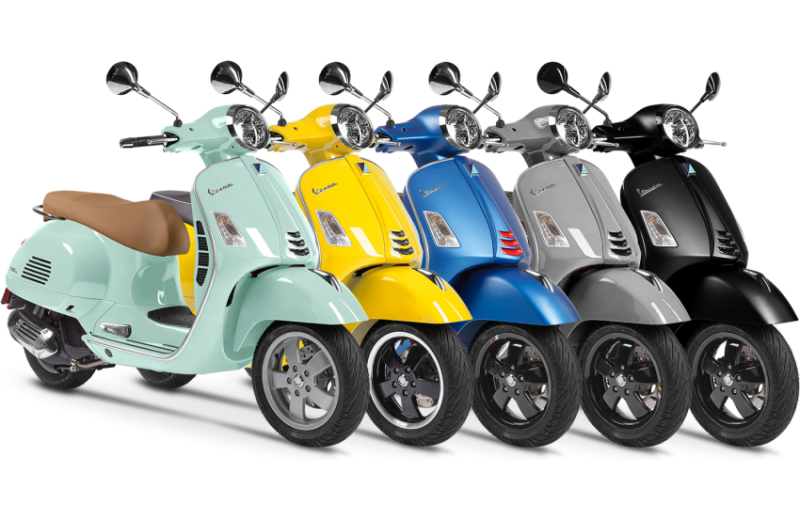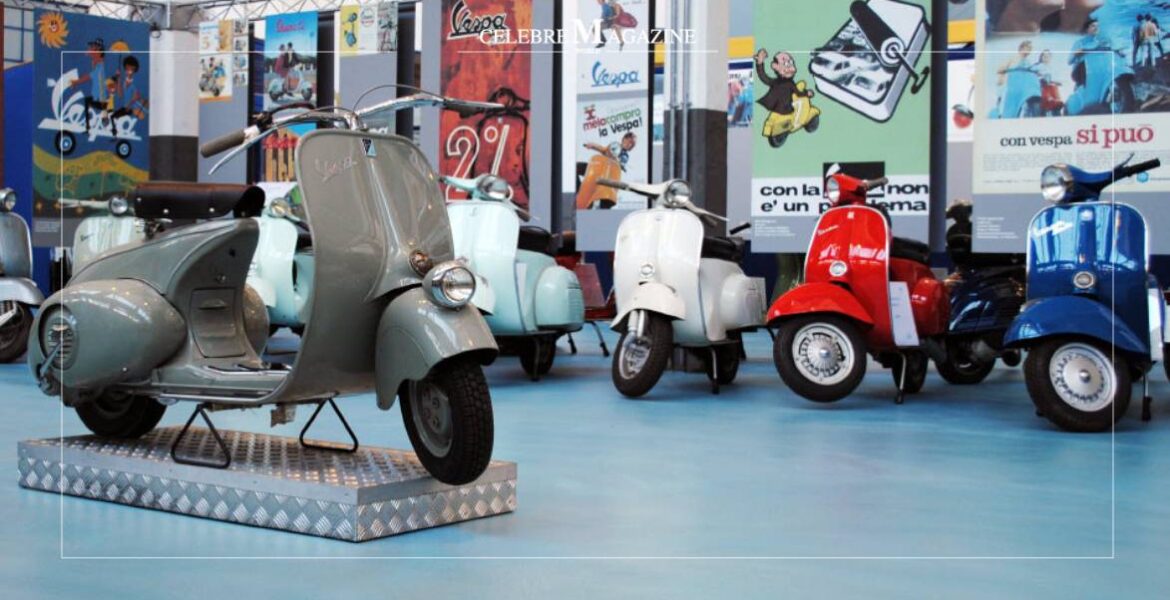On 23 April 1946 Piaggio patented the Vespa made by engineer Corradino D’Ascanio. It is a vehicle that has made the history of two wheels, exhibited in museums all over the world for its design. Made with a completely new concept of transport, the main idea was to create a comfortable design without a central tunnel. The gearbox on the handlebar was designed for comfort and the engine hidden under a frame to avoid getting dirty with oil. The ride was created with the comfort of the seat in mind.

Thus was born a real myth on the road, presented at the golf club in Rome, the Vespa with a displacement of 98 cm3 2-stroke, 3-speed engine, 3.2 horsepower, 4500 rpm and a top speed of 60 km/h was produced in large consumption, the classic version (from 55,000 Lire) to the luxury version (from 61,000 Lire). The first models were sold in Lancia dealerships, in 1946 the first 2500 pieces were produced, exceeded the following year with a sale of 10535 Vespas. Its engine used a mixture of petrol and oil, the 3 or 4-speed gearbox was on the handlebars and was rotated.

This myth remains an industrial design that has written a history of our past and still present without worrying about fashion. Born from the intuition and creativity of a great entrepreneur and engineer in the post-war period, it accompanied our grandparents on the roads. Thus the wasp became the most widespread vehicle in the world, running on its wheels since 1946. An important novelty was the instalment purchase, which made it affordable for more people, so much so that it became an asset of use for everyone and thus extended the sale to more income brackets.

Loved by the cinema, it is celebrated in its all-Italian style, so much so that it is remembered in a wonderful image of the film “Roman Holidays” shot in 1953 and directed by William Wyler and starring Gregory Peck and Audrey Hepburn, a film celebrating the beauty of the Roman capital, shot on a wasp. The 1952 model 125 (V3OT) accompanied the actors on the streets and became the protagonist of this film.

These were important years, and Piaggio decided to venture out and get closer to the world of young people, renewing the Vespa in colours and models, making it more gritty and trendy. The novelty of driving without a licence plate and a licence opened up this sense of freedom to young people, advertised by Gianni Morandi who brought it into the homes of Italians and onto the screen, a myth that until then had not dared, in 1968 with his new advertising message featuring a bitten apple became a symbol of anti-conformism with a style of freedom of thought.

A cult object, an exaltation of the current design, the fortune of this Vespa was its easy utility and its simplicity as a whole, but always in constant evolution in the technical parts. In 60 years Piaggio products in the Vespa line can be seen in its museum, with all the models designed and manufactured in different versions but always faithful to its style.
 More than 30 models have been produced, but the 50 Special is the one that has left its mark on history as a symbol of the 70s with its success, which touched the world sales record, loved by collectors and those nostalgic for those years, it is a model that will hardly be replaced by another means that can touch an institution like the Vespa 50, so loved by different age groups.
More than 30 models have been produced, but the 50 Special is the one that has left its mark on history as a symbol of the 70s with its success, which touched the world sales record, loved by collectors and those nostalgic for those years, it is a model that will hardly be replaced by another means that can touch an institution like the Vespa 50, so loved by different age groups.

An icon that arrived in the postwar period and that thought of a female public, that launched a fashion, that knew how to make itself known and make us known in the world, remained itself and immune to the time that passes will always remain a myth of functionality and beauty.
Edit by Antonella Malizia

